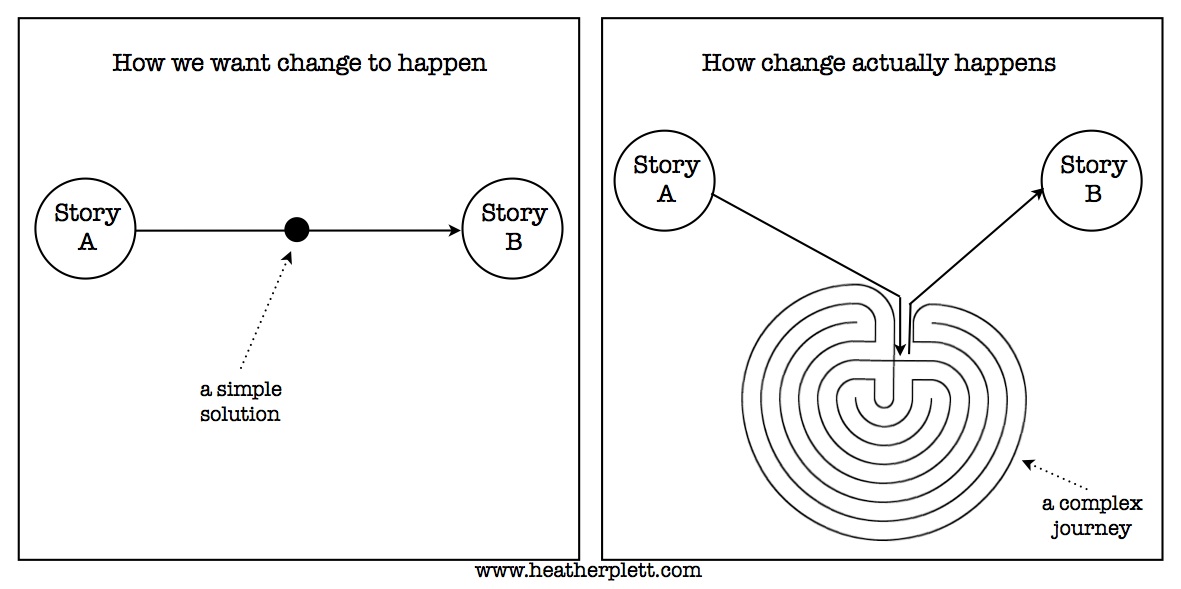
by Heather Plett | Feb 24, 2014 | change
“Do not be afraid of the empty place. It is the source we must return to if we are to be free of the stories and habits that entrap us.” – Charles Eisenstein
I’ve been having a lot of internal dialogues lately, and one of the conversations sounds a lot like this:
Me 1: “Mandala Discovery starts again on Saturday. Why aren’t you doing a better job of marketing it?”
Me 2: “I don’t know. I’m really struggling with marketing lately. Marketing language gets stuck in my throat.”
Me 1: “But you don’t have to be a traditional marketer to make this work. You just have to offer affiliate programs for past participants, buy Facebook ads, send out multiple reminders to your list, blah, blah, blah. Oh… And you have to be more clear about what they get for their investment. People don’t understand just how good Mandala Discovery is because your language is too vague.”
Me 2: “But… The trouble is, I can’t tell them exactly what they’ll get for their investment. Every journey through this will be different and they’ll each find what they need on the journey. I can’t tell them what need will be filled because I don’t know their unique needs.”
Me 1: “How do you think you’ll ever be a successful entrepreneur if you don’t learn to speak in clear marketing lingo? You’ve worked in PR for a long time – surely you know how to tell the story that will sell the product. ‘You want to get to Story B and you’re stuck at Story A? Buy this simple product and you’ll have guaranteed success.’”
Me 2: “That really doesn’t work for me. Nothing I sell fits into the ‘simple product’ category. I don’t offer simplicity. I offer complexity. I invite people into the ‘empty place’ (that Charles Eisenstein talks about in that quote at the top of this page). You can’t put that empty place on a sales page.”
And so it goes, on and on, with Me 1 trying to be more financially successful and Me 2 trying to be more authentic.
Me 2 usually wins, but Me 1 is stuck in some old stories about worthiness and conventional wisdom, and so the dialogue continues.
Last week, I had a series of a-ha moments that have helped me clarify my work even further. First of all, I was working with the leadership team of a local organization that was going through a major transition. When I did individual coaching with each of the people involved, I realized that the stories they were each living in were not in alignment with the direction the organization was heading. In the group conversation I hosted, these stories started coming out, and they realized that the true story that was emerging was very different from what they’d thought was needed. Embracing this true story meant that they would have to release something that was very important for all of them, and possibly even close the doors of the business. This came with a lot of grief that they will have to work through in the coming months. I was reminded, as I held the container for their stories to emerge, that part of my work is to help people and organizations navigate this difficult journey of grief and change in an authentic way.
The work I deeply believe in is not a simple step from Story A to Story B – it’s the releasing of Story A, living in the complexity and grief of that loss, and then being in the empty place where Story B can begin to emerge.
A similar thing happened in my coaching work recently. A client had hired me for three sessions, and in the first session a few months ago, she was trying to decide what her true work was and whether she should leave her job or change jobs to step into something new that felt more purposeful. Finally, however, in the third session, she admitted what she really wanted. “I don’t really want to have a purpose right now. I just want to BE for awhile. I don’t want to DO. I just want to give myself permission to SIT.”
And so, instead of giving her ten easy steps on how to move from story A to story B, we worked on what that empty place would look like and how she could give herself permission to be in it, spending time in play and stillness. She’s now got plans to go away on a personal retreat and to spend time creating a quilt that has no planned outcome, design, or recipient.
Again and again, as I do this work, I hear the longing in people’s hearts for real transformation. In the longing is the assumption (or desperate hope, or outside pressure of family and friends) that they can find a simple fix that will help them move from Story A to Story B. That’s what the marketers have been telling us for years, and so that’s what we want to believe. “Buy this car and you’ll finally feel good about yourself. Use this skin cream and you’ll never age. Take this course and your confidence will grow. Sign up for these coaching sessions and you’ll magically be ready to step into your bigness.”
But when I go deeper with my clients, they recognize that their authentic journeys have nothing to do with the easy steps the marketers want to sell them. Real transformation doesn’t work that way. Real transformation is much more complex and nuanced, and doesn’t fit into bullet points.
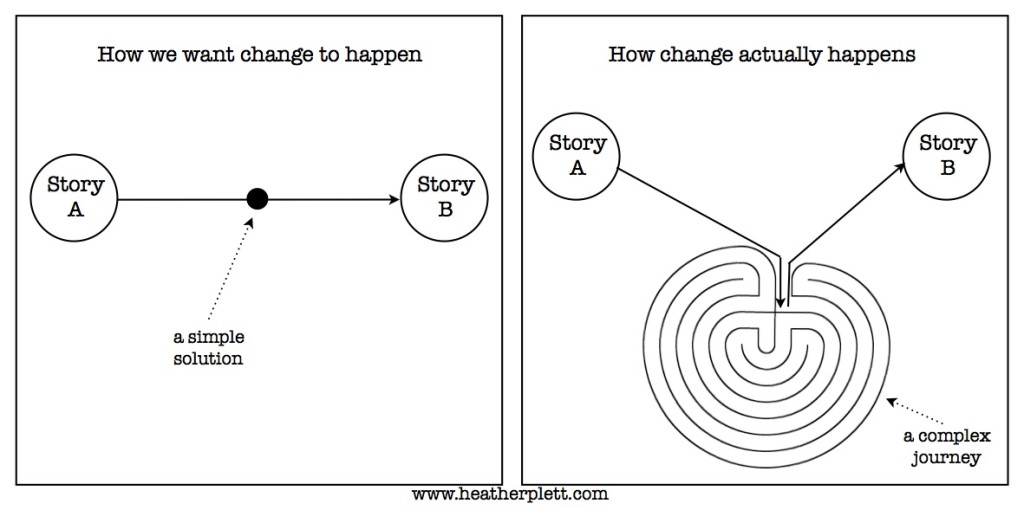
As the illustration suggests, we all want the bullet points that will help us take a direct path from Story A to Story B. But the truth is, the bullet points short circuit the change and Story B doesn’t really have an opportunity to grow out of it.
If we really want Story B to emerge, we have to be willing to let go of Story A, take the winding journey through the labyrinth, and wait for Story B to emerge naturally.
There are three stages to the labyrinth journey. When we journey inward, we release. When we cross the threshold and stand at the centre, we receive. When we journey outward, we return. But we don’t return to Story A. We take what we have received at the centre, we allow ourselves to be transformed, and we follow where the path is leading to Story B.
It’s easy to sell the bullet point, but it’s much harder to sell the labyrinth.
Nobody wants to step into complexity and messiness. Nobody wants to feel lost and confused.
We want short cuts through the grief and emptiness that comes when we let go of Story A, and so we go shopping, we overeat, we sign up for courses, and we try to bury our fear in staying busy. Instead of sitting still at the centre of the labyrinth, we rush to find our new purpose.
Instead of releasing and stepping into trust, we hang on tightly to stories that no longer serve us.
Instead of risking the pain of growth, we try to fool ourselves with the ten easy steps to a better life.
In The More Beautiful World Our Hearts Know Is Possible, Charles Eisenstein talks about The Story of Separation that the world has been living in. That’s a story that keeps us locked in a financial economy that demands growth and the pillaging of the earth for the resources that feed that growth. It’s a story that has us living as separate, self-sufficient individuals instead of in community. It’s a story that requires a greater and greater investment in military actions that help us protect our resources and our self-sufficiency.
The new story that the world is longing for is a Story of Connection. It’s a story that brings us back to a healthy relationship with each other and the earth. It’s a story of trust and compassion, community and spirituality.
As the diagram shows above, we won’t get to the Story of Connection until we are ready to release the Story of Separation, step into the centre of the labyrinth, and receive the new thing that wants to be born in each of us.
I want to be part of that Story of Connection, and that is why I will never sell you what you don’t need, or try to convince you that anything I offer will provide you with an easy solution.
I won’t get rich doing this work, but that’s not one of my values anyway. Getting rich would simply help me hang onto that Story of Separation.
What I would much rather do is invite you to let go of the stories that no longer serve you and step into the labyrinth with me.
I can’t promise you that it will be easy or that the path will be smooth. From personal experience, I know that transformation is rarely easy or smooth. There will be grief, you will have to step into the shadows, and there will be moments when you’ll feel completely lost. Some days, in fact, you will probably regret that you accepted my invitation to step onto this journey.
In the end, though, it will be worth it. The new story will be more beautiful than anything you’ve had to release. You will gradually find your way into your authentic heart, and that is the most beautiful place that you can live. Along the journey you will find other pilgrims who are also finding their way through the grief and shadows, and you will discover that being in community is much better than living a self-sufficient life.
If this is a place you’d like to go, then I invite you to start with Mandala Discovery. You’ll receive 30 prompts that will guide you through a labyrinthian journey into your own heart.
If you want to go even deeper, consider one-on-one coaching and/or a journey through Lead with Your Wild Heart.
p.s. In my desire to live in the gift economy, I look for ways to support people that doesn’t involve financial transactions. If you are interested in any of my programs and do not have sufficient financial resources, please contact me to see if we can work something else out.
by Heather Plett | Feb 15, 2014 | writing
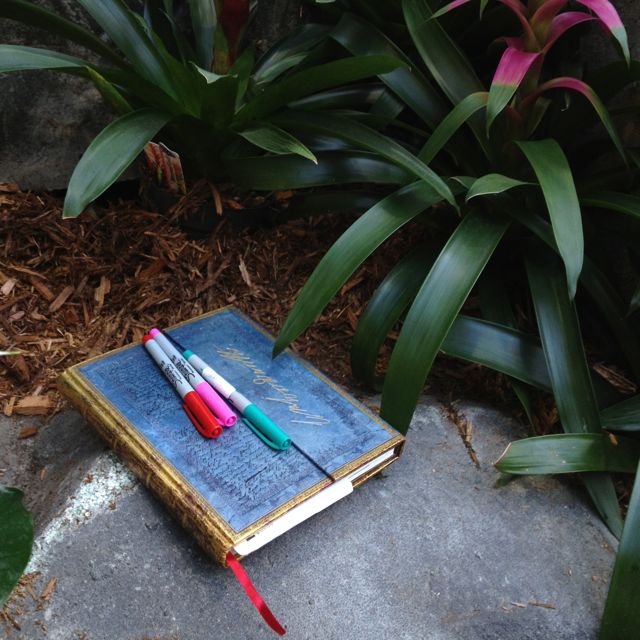 Yesterday I hosted an Openhearted Writing Circle. It was beautiful. When people dare to come together to explore and share their raw and courageous stories, magic happens.
Yesterday I hosted an Openhearted Writing Circle. It was beautiful. When people dare to come together to explore and share their raw and courageous stories, magic happens.
Before they started to write, I gave them these simple suggestions. I give them to you, too, in case you want to be an openhearted writer.
- Be in love. Write from a deep source of love that wants to flow through you. You are not writing for a critic, you are writing for love. Dare to be in that love.
- Be courageous. Dare to dive deeper into your own truth than you ever have before. Dare to say those things that make you tremble.
- Be honest. There is no point in watered-down truth. If you are lost in a dangerous sea of sadness that threatens to drown you, and you say simply “I’m a little sad”, you’re not telling the whole truth.
- Be authentic. Nobody wants Hemingway’s stories coming out of your pen. Only YOUR stories can come out of your pen, and your stories are as unique and valuable as Hemingway’s, even if they’re never published and are meant simply for your own healing.
- Be messy. You don’t have to get it right the first time. Or even the second. Let yourself get messy and spill all that you have onto a page. There will be time to polish later, but to start with, get it all out there without editing what wants to flow. The most beautiful gems show up when you make the least attempt to edit yourself.
- Be kind to yourself. Silence the inner critic and simply let yourself write. You are not seeking perfection, you are simply seeking a gateway into your truth.
- Be passionate. Dare to show the fullness of your emotion – your love, hate, fear, strength, anger, etc. – on the page. Dare to shout “YES!” to the world through your writing. Dare to live out loud.
- Be generous. Give it ALL to the page (and to your reader), not just a token. If there’s wisdom that wants to flow out of you right now, don’t save it for another day – let it flow. Be intentional about living in the gift economy, where we serve each other instead of seeking a “return on every investment”. You have gained wisdom in your years on the earth and others need it, so share it.
- Be patient. “If good ideas do not come at once, or for a long time, do not be troubled at all. Wait for them. Put down the little ideas however insignificant they are. But do not feel, any more, guilty about idleness and solitude.” – Brenda Ueland
- Be trusting. There are stories in you that want to be told – trust the muse to help you tell them. Trust yourself to have the right words and the right creativity.
- Be shameless. The greatest barrier for people telling truthful, raw stories is often the shame that we feel about that story. “What will people think if they know this about me?” But that keeps us from really connecting and helping other people through our stories.
by Heather Plett | Feb 6, 2014 | Beauty, circle, Creativity, Uncategorized
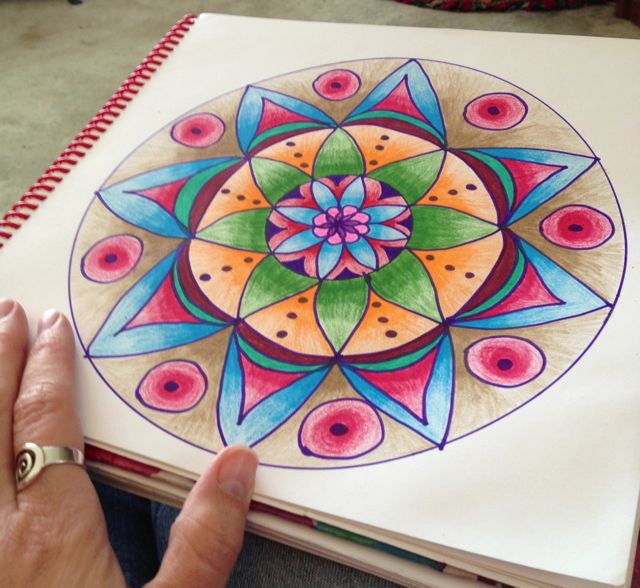 I see more and more women (and some men) who are finding their way back to the things they love to do – painting, dancing, writing, hosting, horseback riding, hiking, taking pictures, acting, etc.
I see more and more women (and some men) who are finding their way back to the things they love to do – painting, dancing, writing, hosting, horseback riding, hiking, taking pictures, acting, etc.
I work with a lot of these people, in my coaching and workshop facilitation, and I love to see the delight in their eyes when they talk about what they truly love to do. Some, for example, sit in my Creative Writing for Self-discovery circle and talk about how writing poetry feels like a homecoming – like something they’ve been longing for but didn’t know they were missing. Others start playing with mandalas and can’t believe how much joy it brings them to hold pencil crayons in their hands again.
Almost always, though, I see that delight in their eyes fade when I ask them “why don’t you do more of it?” They stammer a reply that sounds remarkably similar to all of the other excuses I’ve heard (I’m too busy, it makes me feel guilty, my partner makes fun of me, I can’t take the time away from my kids, etc.). And when they come back a week later, they sheepishly say “I wanted to do the homework, but couldn’t find the time.”
The bottom line is that they have been fed a lie that what they love to do is trivial. It’s the thing you do only if you have time after all of the important things are done. It’s just a hobby, so shouldn’t be taken as seriously as washing the dishes or crunching numbers at the accounting office you work at.
I have struggled with this lie in my own work too. Sure I teach transformational workshops online and off, but it’s not really that important, is it? It’s just stuff people do on the fringes of their lives – it doesn’t fit in the “mainstream” where people are doing real work. Even though I believe in it deeply and know it can transform people and communities, I have trouble marketing my work in the corporate world, because… well… won’t people make fun of me for trying to sell something so trivial in a serious environment?
Mandala journaling? That’s fine for people with time on their hands, but don’t try to get a serious corporate executive to colour in a circle. It’s far too trivial for someone with an important job title. Gathering in circle? Oh that’s just for women who aren’t doing the big, important work in the world. It’s not going to fly in places where people are having tough conversations and changing the world.
But it’s all a lie, and I know that. It’s the lie the patriarchy has been telling us for hundreds of years to keep us silent and to keep us from changing the accepted structures and heirarchy. It’s a lie we’ve been fed again and again, since childhood, and we don’t know how to change it because we’ve received so many wounds over it, we’ve learned to hide our hearts and keep our deepest loves secret.
Imagine if we could rise out of the shame and the fear and truly believe in what we love to do.
Imagine if we could convince governments to move their chairs into circles and have real conversations instead of the polarizing shouting they do at each other from across the room. Imagine if business meetings started with some quiet journaling or mandala-making. Imagine if there was daily dancing in the corporate offices downtown. Imagine if the heads of corporations and governments had to go on vision quests or self-discovery retreats before they could be trusted to lead.
It’s hard to imagine, isn’t it? Your first thought, like mine, was probably “oh, it would never work”. But what if every time we heard that voice of resistance in ourselves, we recognized it as the voice of the patriarchy trying to silence us, and we challenged it instead of accepting it?
A few weeks ago, I co-facilitated a weekend stakeholder consultation for a national association of city planners. Because we knew it would be a difficult conversation, we encouraged them to use circle to ensure that everyone was heard. There was some reluctance to our recommendation, but fortunately we had an ally on the planning committee, and so we went ahead with it. The circle transformed the way they gathered. People made positive contributions throughout the weekend because they felt heard. Important decisions were made AND people felt valued and hopeful.
The circle is NOT too trivial for people who are making important business decisions. In fact, I think it’s imperative.
A few years ago, I was facilitating a team planning retreat for a non-profit, and I invited everyone to start with some simple yoga poses, and then we played with modeling clay and tried to envision our future through clay. Halfway through, one of the people in the room said, “but when are we going to do the real work?” He was anxious to get to the strategic planning we needed to do. I didn’t say much, but when we were finished, we looked at each other’s clay creations and saw a great deal of vision for where the team needed to move. “Oh, I get it,” said the person who had resisted. “This IS the real work.” Yes, it is. We saw more vision emerge from the pieces of clay than we would have in a traditional brainstorming session.
Art-making and yoga are NOT too trivial for people doing world-changing work. In fact, I think it’s imperative.
It’s taken me years to stop believing the lie (and it still creeps in now and then), but I believe that the world is crying out for us to do this work. It’s transformational for EVERYONE, not just the people with time on their hands after the real work is done.
It starts by changing us individually, and with that as a base, it can change governments, change international relationships, change the way we treat our earth, and change our communities.
I believe it’s imperative. The world needs this kind of change. And it will have to start with a healing of our collective wound and a new belief that this is worthy work we are doing.
If you are on the path to the work you love, or you want to step onto that path, consider a journey through Pathfinder.
If you want to practice openhearted writing, consider joining a small, intimate virtual circle on Friday, February 14th.
by Heather Plett | Nov 12, 2013 | Beauty
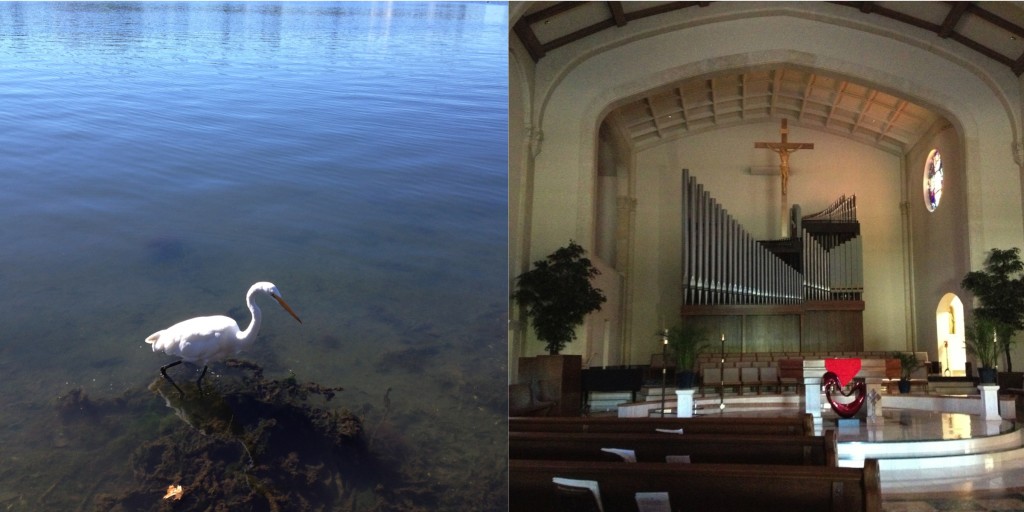
I sat on the shores of the lake, watching the birds float and fly past. A cormorant stood on a post, its wings spread wide to the sunshine. The lake is a wildlife sanctuary. In that space, the birds are safe to do what is truest to their natures. No predators can harm them there.
Sanctuary. A place to be safe.
Wildlife sanctuary. A place to be safe in your wildness.
Near the lake was a church. I wandered inside. It was beautiful, polished, and serene. A sanctuary.
And yet… it wasn’t a wildlife sanctuary. My wildness did not feel safe in that place. I wanted it to – longed for a real sanctuary where my wildness was honoured – but I didn’t trust the immaculateness. I couldn’t feel safe revealing all of myself in that space. Too much of me had been judged in spaces like that in the past.
“What if I DID feel safe in this space?” I thought. “How would church be different if it were more like a wildlife sanctuary? If it were the kind of place where we could be totally free to be our wild selves without feeling the pressure to conform? Without having to protect ourselves from predators? What if it truly represented the wild way that God loves?”
As though to test my question, I took off my shoes and stepped into the baptismal font. The water was cool and sweet against my skin. It felt good – a baptism of my wildness. But it didn’t feel safe. I kept an eye on the door, expecting a stern priest to walk in and send me away for defiling the church. All I dared to reveal was my feet. I stepped out quickly and tried not to leave footprints.
I went back outside to the lake. There I felt safe. With the birds and the trees. I took of my shoes again and didn’t worry about footprints.
A week later, at another lake, giggling in the dark with a small tribe of friends, I tripped through the woods and stepped into the lake. Tentatively, we inched our way into the dark water. It held us and invited us further in. We gave ourselves to it. Bathing suits came off and we let ourselves be baptized in our wildness. For long lazy moments, we floated – just a little bit fearful and yet fully wild and fully alive.
This was our wildlife sanctuary. Here we were safe to reveal all that we were. Here we were wholly loved – by the water, by each other, by the gods of our understanding.
From the moment we step away from the safety of our parents’ arms, we are each on a lifelong quest for that place of sanctuary – that place were we can dare to let ourselves be fully wild, fully naked, and fully baptized. Sometimes (far too rarely) we find it in a church, sometimes we find it in the woods with a circle of friends. Sometimes we only find tiny whispers of it that make us long for more.
Once we find it, we know that we need more of it and we know that we need to commit our lives to co-creating it for others. Because there is nothing quite like the feeling of knowing that we are fully loved and accepted in our nakedness. There is nothing that makes us feel more alive and beautiful.
Together, those of us who have learned to reveal our wounds and our nakedness to each other, become co-creators of circles of grace. We are wildlife sanctuary keepers. We are witnesses of the kind of God/dess who longs to help us create REAL sanctuaries, not artificial polished spaces where only those who have washed first can step into the baptismal font.
Because living truthfully in our wildness is the only way to fully be alive.
If you are longing for more of your wildness to be revealed, step into the sanctuary of Lead with Your Wild Heart. You are safe here.
by Heather Plett | Oct 23, 2013 | Uncategorized
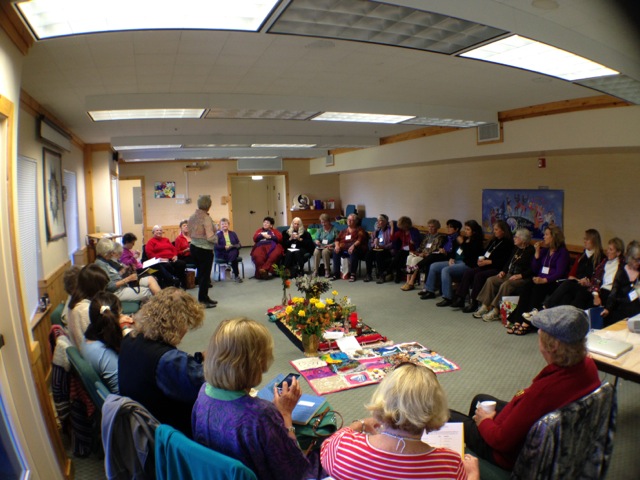 In the past week, I have done three interviews – two where I was guest speaker for online courses and one where I was a guest on an upcoming telesummit on feminine wisdom.
In the past week, I have done three interviews – two where I was guest speaker for online courses and one where I was a guest on an upcoming telesummit on feminine wisdom.
The theme that kept coming up in all three of those conversations, and in my recent talk at Patti Digh’s Design Your Life Camp, was this:
We don’t need another hero. (Thank you, Tina Turner.) What we need instead are people who will serve as hosts.
This is not an original thought to me, but the more I learn about it, the more central it has become to the work that I do. (I learned it first from my teachers Margaret Wheatley and Deborah Frieze, and have become immersed in it in my work with The Art of Hosting and Harvesting Conversations that Matter.)
We have built too many of our models (in business, government, church, Hollywood, etc.) on the expectation that someone will show up as the hero to save us from the ills of the world, or that we have to show up as the hero for someone else. What that does is create environments where our heroes have too much power, we assume that the rest of us don’t have the capacity to impact real change, and we become complacent in the face of violence, destruction of the earth, racism, economic imbalance, etc.
Here’s what Meg Wheatley has to say about the difference between a hero and a host:
You’re acting as a hero when you believe that if you just work harder, you’ll fix things; that if you just get smarter or learn a new technique, you’ll be able to solve problems for others. You’re acting as a hero if you take on more and more projects and causes and have less time for relationships. You’re playing the hero if you believe that you can save the situation, the person, the world.
Hosting Leaders create substantive change by relying on everyone’s creativity, commitment, and generosity. They learn from firsthand experience that these qualities are present in just about everyone and in every organization. They extend sincere invitations, ask good questions, and have the courage to support risk-taking and experimentation.
The more I learn about what it means to serve as a host leader, the more I am determined to incorporate it into every part of my life. I am a host leader in the way that I teach at the university, inviting my students into their own creativity, innovation, and way of learning instead of trying to impose my ideas on them. I am a host leader in the way I lead retreats, starting always in circle, where we look into each other’s eyes, see the humanity there, and share our stories in a way that invites both vulnerability and strength to show up. I am a host leader in the way that I parent, creating a container for my children to grow into the best version of themselves, instead of trying to mould them into my view of what they should be. I am a host leader in the way I coach, asking meaningful questions that will reveal my clients’ deepest wisdom and truth.
How can we be more intentional about serving as host leaders? Here are some of the thoughts that have emerged from my many conversations with my teachers and fellow-learners on the subject:
- Start with curiosity. Leaders are usually taught to be decisive and knowledgeable, and to “never let them see you sweat”. That’s a hero model that closes the door to new things showing up and to other people bringing ideas and questions into the room. Instead, open the door to possibility by being curious. What is opening up? What is possible? What do people bring? What would happen if…?
- Host yourself first. Get clear on who you are and where you stand. Find the practices that help to ground you in your own truth and wisdom and that help you withstand the pressures of ego and “the way things have always been”. Inquire into your own stories, triggers, and fears first so that you are more prepared to host what shows up in the circle. (A practice like Mandala Discovery can help with that.)
- Be vulnerable. Admit what you don’t know. Admit that you need other people. Admit your failings. It may seem counterintuitive, but vulnerability is one of the greatest strengths of a leader. Vulnerability invites courage, growth, and meaningful relationships.
- Invite vulnerability in others. Create a space where it is safe to fail, to fall apart, to not know the answer, and to take risks. People will show up with all of who they are when they know that they are safe.
- Trust other people and invite them to bring their creativity, commitment, and wisdom. Every time I teach, I begin by saying “I am not the only person who brought wisdom into the room. Everyone of you brought wisdom, and it is my hope that at some point in this class, you will feel comfortable enough to share it.” Trust them and give them autonomy.
- Ask good questions that open up meaningful conversations. Good questions are invitational rather than assuming. They invite energy rather than trying to contain it. They serve like a garden hoe, loosening the soil so that the seeds can grow.
- Be an active and engaged listener. An effective host leader spends a lot of time in silence. That’s something that’s taken me a lot of time to learn as a leader/teacher/parent – that I am more effective when I am listening to other people than when I am trying to fill the space with the knowledge I feel compelled to offer people. An effective listener/host allows the people in the circle to get closer to their OWN wisdom and stories rather than trying to adopt someone else’s wisdom.
- Start with a “heart at peace” rather than a “heart at war” (from the book Anatomy of Peace). A heart at war sees others as objects to be overcome, colonized, monopolized, directed, changed, while a heart at peace sees the humanity in each person.
- Rearrange the chairs. Most of our classrooms, boardrooms, conferences rooms, etc., are set up in a way that honours the hero model, with the expert at the front of the room. As my circle teachers, Christina Baldwin and Ann Linnea say, “change the chairs and you change the conversation.” Get people into circle and teach them that each person in that circle has some responsibility for holding the container and for honouring every other person in the room. There is no room for a hero leader in a circle.
If this is something you’d like to learn more about, I invite you to attend the upcoming Art of Hosting training that I’ll be co-hosting in Winnipeg in November. This is the kind of training that I wish everyone could take at some point in their life. The more of us who take it, the more the world will change.






